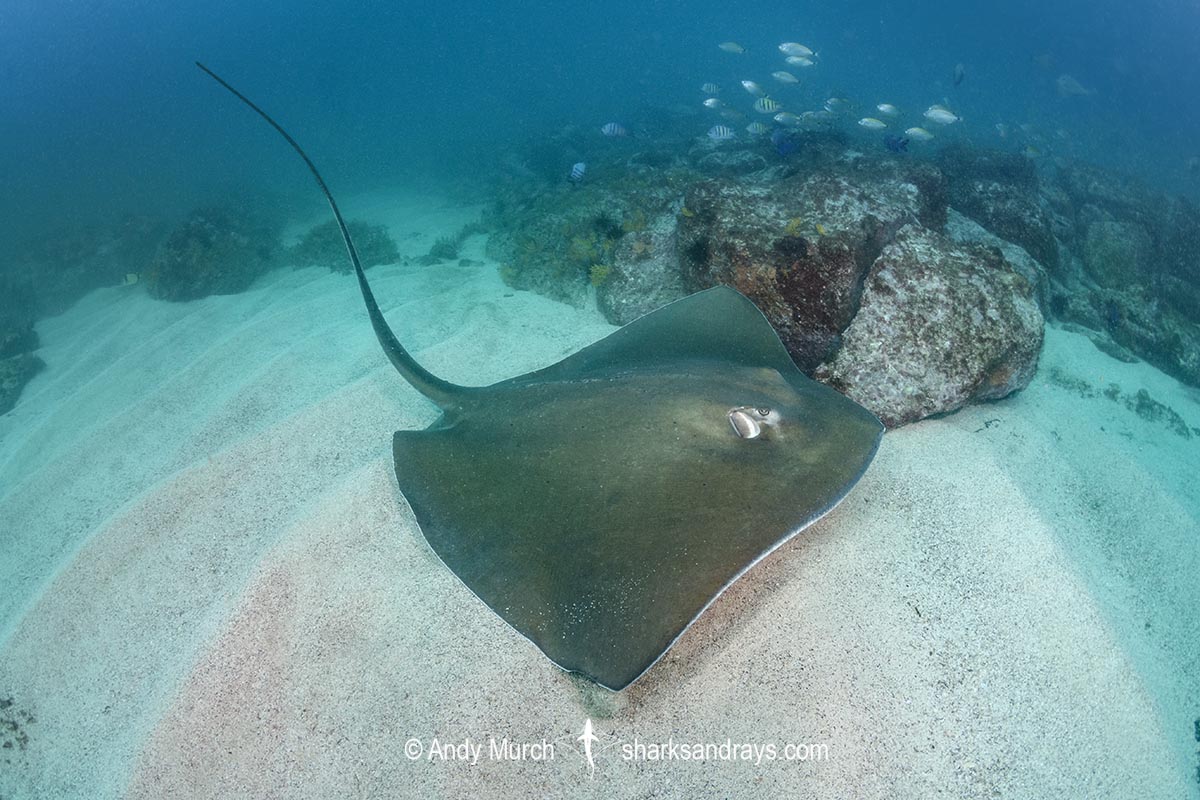Common name(s)
Smalltooth Stingray.
Binomial
Hypanus rudis
Synonyms
Dasyatis rudis, Dasybatus rudis, Trygon rudis.
Identification
A very large stingray with a kite-shaped disc that is slightly wider than long; disc width approximately 1.1-1.2 x length. Snout short, obtusely angular, with a barely visible protruding tip. Anterior margins of disc almost straight to weakly undulate. Pectoral fin apexes angular. Pelvic fins small with tightly rounded apexes.
Eyes relatively large and protruding. Snout length around 3x combined eye and spiracle length.
Mouth contains 3 oral papillae centrally and often with smaller papillae on each side. Deep labial furrows around mouth. Mouth weakly arched. Lower jaw mildly convex. Skirt shaped nasal curtain with a strongly fringed margin.
A continuous row of small thornlets extend along midline from nape to base of tail. Short row of thornlets on each shoulder. Tail long, tapering gently to caudal sting, then filamentous to tip. Tail length (when intact) approximately 1.7 x disc width. Ventral finfold long and low; depth slightly exceeding tail height. Dorsal finfold very small; reduced to an indistinct ridge. One tail sting usually present.
Colour
Dorsum greyish-brown to greenish-grey, often with a pale patch below eyes. Ventrum white. Tail white ventrally to caudal sting, then white laterally to end of ventral finfold, then black to tip. Ventral fin fold dark.
Size
Maximum disc width 198cm. Total length around 330cm. Disc width at birth 33-39cm.

Conservation Status
CRITICALLY ENDANGERED
The smalltooth stingray (Hypanus rudis) occurs in a region with intense fishing pressure. When caught, this species is retained for its meat.
It is thought that the smalltooth stingray has declined by 90% over the last three generation lengths

Habitat
Tropical/sub-tropical seas. On sandy substrates and reefs. Possibly also estuarine. To at least 30m.
Distribution
Eastern Atlantic. Mauritania to Camaroon including Sao Tome and Principe.
Reproduction
Asumed aplacental viviparous. ~4 pups per litter. Gestation unknown.
Diet
Likely benthic invertebrates and small fishes.
Behavior
Poorly known.
Reaction to divers
Shy. Moves away if approached closely.
Diving logistics
I have photographed this species in July at Seminole Reef in Senegal. The locals say very large rays are common during the summer, so this may be a good spot to find this species.
There are also recorded sightings by divers from Sao Tome and Principe.
What’s new
View our full list of updates
Similar species
Brown/Broad Stingray – Bathytoshia lata Distinguished by lack of thorn rows on shoulders, much larger lobe on tip of snout, and tail densely covered in thorns.


